Some of the stuff we did was mindblowing. I couldnt believe one single laboratory took up as much energy as all of westwood. The technology was incredible. We first started of the day with shapes. We looked at shapes in nature and science. What freaked me out was how sounds could have shapes. Nature demonstrated this. Certain crystals, or something, would change shape when a high frequency sound came in. The shapes changed to weird circles and god knows what those other shapes and patterns were called.
Something really interesting was visiting the Fouler Museum and seeing the art of the Aborigines. Most of the art just looked the same. These guys have been around for quite some time in the deserts of Australia, and have learned to live in that harsh and arid environment. Lately, they have been getting pushed around by the English settlers, kind of like the Native Americans. To paint, they use complex patterns of dots and colors. They have a very primitive and simple communication language that they paint in their paintings. They have been scared of letting their “precious” culture bleed to westerners. They want to keep their art sacred and special.
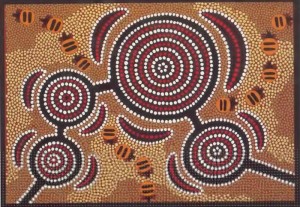
The most amazing thing was the Plasma lab in Westwood. It was quite a walk, especially with the hot sun, dark jeans and shirt, and a long time of walking. It was worth seeing the Plasma lab though. Plasma is known as the fourth state of matter, that doesnt naturally occur on Earth. It has plenty of practical applications, like plasma t.v.s and stuff. It is when electrons are relatively free. They must occur in very high temperatures though. They are electrically conductive and respond well to an electromagnetic field. It is the most abundant state of matter in the universe. The stars and our own sun are made of it.
UV light or a laser can form plasmas, by transferring energy to knock down electrons. They can be steered by electrical and magnetic fields. The magnets at the lab were strong enough to wipe away your credit card or, in my case, my room key that also gives me food. Because they can be controlled and applies easily with magnets, they have many practical applications. They can be efficient sources of radiation. They are good for lighting. Something really interesting is that the energy from fusion and forming a plasma can be extremely exothermic and produce huge amounts of energy. However, if done for even a short amount of time, the plasma will melt everything due to the high temperature. The sun gets its energy from this. A lot of research is being done on plasma, but the plasma has cool temperatures and are only performed within millionths of a second.
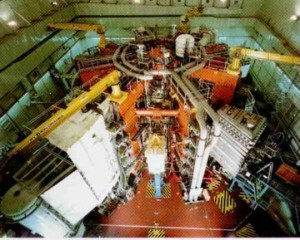
http://www.aboriginalartonline.com/index.php
http://www.plasmas.org/what-are-plasmas.htm
http://www.pppl.gov/
http://pluto.space.swri.edu/image/glossary/plasma.html
http://www.cartage.org.lb/en/themes/Sciences/Physics/PlasmaPhysics/Applications/Applications.htm
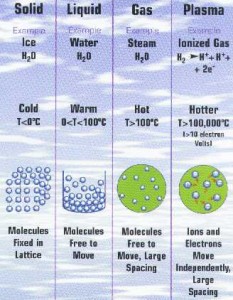
 art. To start off, despite the common belief, atoms rarely have a spherical shape. In fact, atoms found in nature can take a vast variety of shapes including: dumbbell, cross, or sometimes spherical. The properties of crystal atoms are determined by the structure of the atom. Different structures account for differences in hardness, and other electronic and optical properties. Also the stuctures and the way it diffracts light determines color. Furthermore, shape can determine a molecules’ function. For example, DNA polymerase, a vital enzyme in the nucleus, has a specific structure or shape designed to help copy our genetic material. This same concept applies to protein synthesis, which occurs in the ribosome. Suddenly the lecture began to focus on art and design but shape remained the common constant. I began to see how the most basic properties, in this case shape, applied to concepts both in science and art.
art. To start off, despite the common belief, atoms rarely have a spherical shape. In fact, atoms found in nature can take a vast variety of shapes including: dumbbell, cross, or sometimes spherical. The properties of crystal atoms are determined by the structure of the atom. Different structures account for differences in hardness, and other electronic and optical properties. Also the stuctures and the way it diffracts light determines color. Furthermore, shape can determine a molecules’ function. For example, DNA polymerase, a vital enzyme in the nucleus, has a specific structure or shape designed to help copy our genetic material. This same concept applies to protein synthesis, which occurs in the ribosome. Suddenly the lecture began to focus on art and design but shape remained the common constant. I began to see how the most basic properties, in this case shape, applied to concepts both in science and art. died the paintings of the Australian Aborigines throughout the 20th century. I noticed that the more recent paintings used canvas and better paints. Because the materials were of a higher technological value, I concluded that this was the only connection between the Aborigines and science. Next we visited the special collections are of the library. Again we looked at history but this time it revolved more around science and astronomy. We were shown the ancient writings of Copernicus and his revolutionary idea of a heliocentric universe.
died the paintings of the Australian Aborigines throughout the 20th century. I noticed that the more recent paintings used canvas and better paints. Because the materials were of a higher technological value, I concluded that this was the only connection between the Aborigines and science. Next we visited the special collections are of the library. Again we looked at history but this time it revolved more around science and astronomy. We were shown the ancient writings of Copernicus and his revolutionary idea of a heliocentric universe.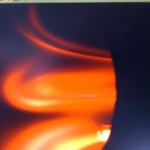 the day, we visited a plasma research lab. This was by far the most interesting even tough I had trouble finding the artistic element of it. We saw the chamber in which plasma was created and even caught a glimpse of the pink flashes that were the plasma. Plasma is made by beaming electrons into a vacuumed chamber of around 1000° centigrade. The electrons then collide with helium atoms producing the fourth phase of matter: plasma. When I climbed the ladder to see into the chamber window, I glimpsed a magnificent orange glow (electron beam) burning through a metal grate and creating a pulsing ring of brilliant pink. All in all, I was happy with today’s course of events, even though it caused extreme exhaustion.
the day, we visited a plasma research lab. This was by far the most interesting even tough I had trouble finding the artistic element of it. We saw the chamber in which plasma was created and even caught a glimpse of the pink flashes that were the plasma. Plasma is made by beaming electrons into a vacuumed chamber of around 1000° centigrade. The electrons then collide with helium atoms producing the fourth phase of matter: plasma. When I climbed the ladder to see into the chamber window, I glimpsed a magnificent orange glow (electron beam) burning through a metal grate and creating a pulsing ring of brilliant pink. All in all, I was happy with today’s course of events, even though it caused extreme exhaustion.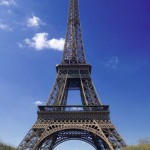

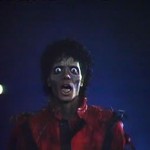
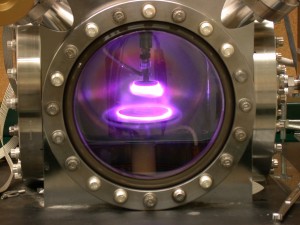
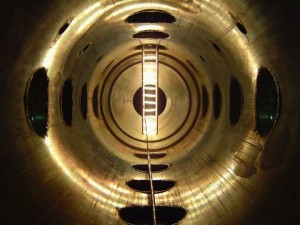
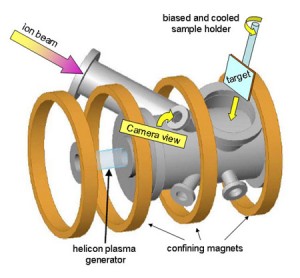
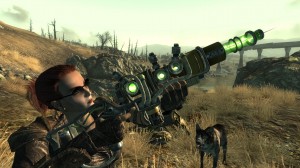
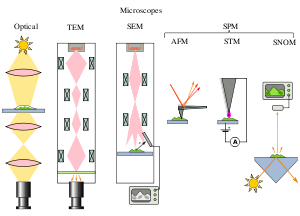













 My group was having trouble showing an artistic element to our project but thanks to the midterm we hope to do an animation such as a flip book that will show how we would design the nanobots and to show how they would move throughout the body. I found the midterm to be a very helpful step in the process of the project.
My group was having trouble showing an artistic element to our project but thanks to the midterm we hope to do an animation such as a flip book that will show how we would design the nanobots and to show how they would move throughout the body. I found the midterm to be a very helpful step in the process of the project.